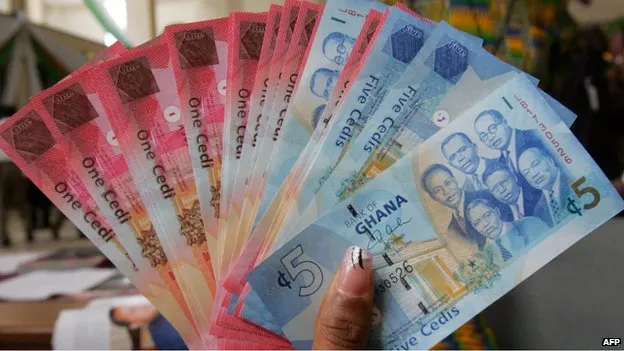The Director of Research at the Institute of Economic Affairs (IEA) Dr John Kwakye has said he is worried at the rate of the depreciation of the Cedi against the Dollar.
This is despite the position of the Monetary Policy Committee (MPC) that the Cedi has generally stabilised.
In a post on is X platform reacting to the reduction of the policy rate from 29% to 27%, Dr Kwakye, also an economist, said “I welcome the MPC decision to cut the PR from 29% to 27%. This was long overdue. I expect more cuts to follow. I am, however, disturbed by the pace of depreciation. From 4 to the $ to 16 now, the cedi has lost 75% of its value during the period. This is unacceptable! #SaveTheCedi.”
Chair of the MPC, Dr Addison however said during the 120th MPC press conference in Accra on Friday September 27 that after coming under pressure in May and June, the exchange rate has generally stabilized in recent times.
This was mainly driven by the still tight monetary policy stance and improved forex liquidity support, he said.
From the beginning of the year to 25th September 2024, the Ghana cedi depreciated by 24.3 percent against the U.S dollar. In the second half of the year, the cedi witnessed a slower pace of depreciation of 7.1 percent.
Dr Addison said that the stability of the Cedi is major sign of economic recovery. He further stated that the external environment has improved since the last MPC meeting as global economic activity remained resilient in the second quarter of 2024. Growth was supported by private and government spending, a resilient services sector and declining oil prices. Additionally, he said, the anticipated policy easing cycle initiated by major central banks in advanced economies, in response to declining inflation rates, have also been supportive of growth.
“These conditions are favorable for the domestic economy,” he stated.
“The domestic economy continues to recover, evidenced by the stronger than expected GDP outturn for the second quarter of the year. Growth in the second half of the year is also expected to be firm, supported by sustained activities in the construction sector, consumption of goods and services by households and firms, exports of gold and crude oil production, as well as banks’ extension of credit to the private sector. The external payment position continues to improve, characterized by higher trade surplus, and strong reserves build-up. Notably, the robust growth in gold exports has helped to improve the trade surplus and international reserves, complimented by external financial inflows from the IMF and the World Bank.
“These together have contributed to an improved balance of payments position in the first half of 2024. Looking ahead to the end of the year, the balance of payments is projected to achieve a surplus, driven by increased exports, stronger remittance growth, and lower government external payments.”
In the assessment of the Committee, preliminary data since the last MPC meeting held in July 2024 indicates that macroeconomic conditions have generally improved.
Headline inflation has eased, and growth has `picked up.
“Fiscal policy implementation has been robust, providing impulse that is supportive of growth, while monetary conditions have remained tight and supportive of the disinflation process.
“Headline inflation, since the first quarter, has declined for 5 consecutive months by 5.4 percentage points. Core inflation has also declined sharply over the same comparative period by 6.9 percentage points. These trends suggest that the disinflation process is on course.
“The latest forecasts show that inflation will continue to ease towards the range target of 13-17 percent for the year and steadily track back towards the medium-term target of 6-10 percent by the end of 2025, barring unanticipated shocks. At the current juncture, the committee judged the risks to inflation outlook as fairly balanced. Given these considerations, the Committee decided to lower the Monetary Policy Rate by 200 basis points to 27 percent”

















